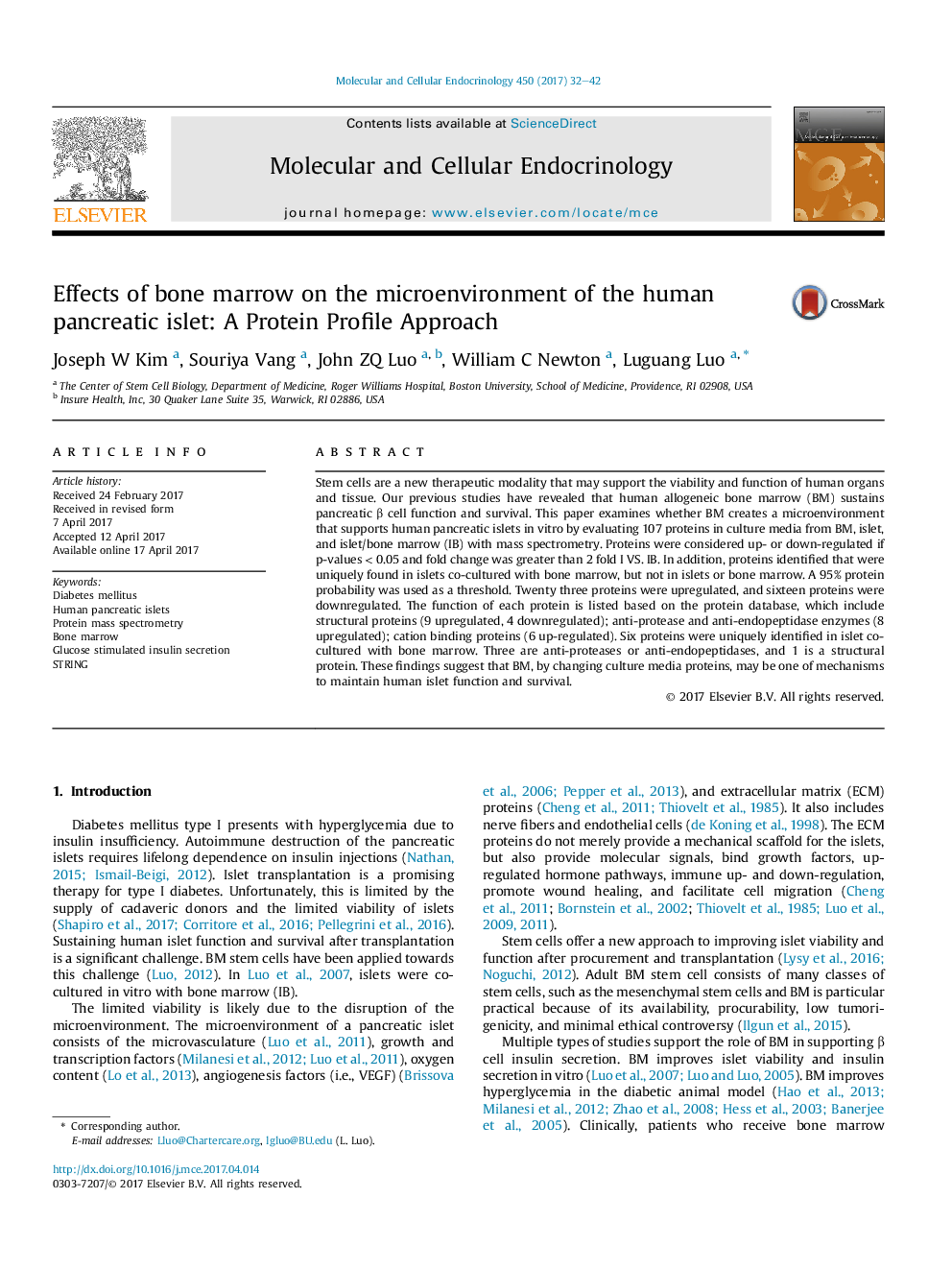| Article ID | Journal | Published Year | Pages | File Type |
|---|---|---|---|---|
| 5534167 | Molecular and Cellular Endocrinology | 2017 | 11 Pages |
â¢Bone marrow, containing adult stem cells, improve pancreatic islet viability and function.â¢Mass spectrometry of the culture media of human pancreatic islets co-cultured with bone marrow is performed.â¢Up-regulated proteins (23) include structural proteins, anti-proteases, and cation binding proteins.â¢Down-regulated proteins (16) include structural proteins.â¢Proteins only found in the islet co-cultured with bone marrow (6) include anti-proteases, and endopeptidases.
Stem cells are a new therapeutic modality that may support the viability and function of human organs and tissue. Our previous studies have revealed that human allogeneic bone marrow (BM) sustains pancreatic β cell function and survival. This paper examines whether BM creates a microenvironment that supports human pancreatic islets in vitro by evaluating 107 proteins in culture media from BM, islet, and islet/bone marrow (IB) with mass spectrometry. Proteins were considered up- or down-regulated if p-values < 0.05 and fold change was greater than 2 fold I VS. IB. In addition, proteins identified that were uniquely found in islets co-cultured with bone marrow, but not in islets or bone marrow. A 95% protein probability was used as a threshold. Twenty three proteins were upregulated, and sixteen proteins were downregulated. The function of each protein is listed based on the protein database, which include structural proteins (9 upregulated, 4 downregulated); anti-protease and anti-endopeptidase enzymes (8 upregulated); cation binding proteins (6 up-regulated). Six proteins were uniquely identified in islet co-cultured with bone marrow. Three are anti-proteases or anti-endopeptidases, and 1 is a structural protein. These findings suggest that BM, by changing culture media proteins, may be one of mechanisms to maintain human islet function and survival.
